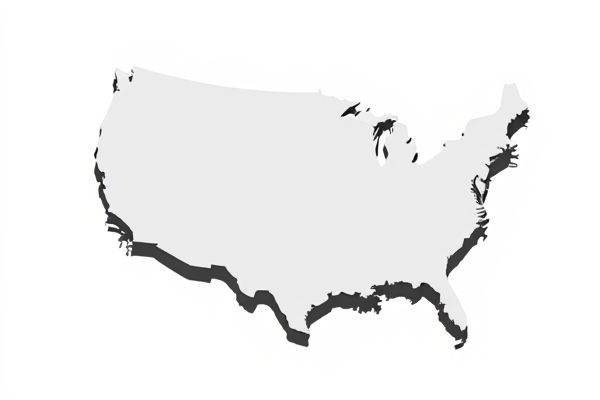
Explore the convenience of generating random US states and territories instantly with this online tool. Perfect for educators, game enthusiasts, and geography lovers seeking quick and unbiased selections. Discover new locations and enhance your projects with a simple click.
Online tool for random us state and territory generator
We have prepared a random US state and territory generator for you to use and customize. You can enter your own list or use the provided samples. With a single click, you will receive a randomized list or a single random value to utilize.Data Source
Single Result
Multiple Results
Introduction to Random US State and Territory Generators
Random US state and territory generators are online tools designed to provide users with a quick, unbiased selection of any state or territory within the United States. These generators use algorithms to effortlessly produce random results, ideal for educational purposes, travel planning, or decision-making activities involving the 50 states and five inhabited territories. By leveraging these tools, users can explore geographic diversity, discover lesser-known regions, and enhance their knowledge about US states and territories efficiently.
Importance of Randomization in Geography Learning
Random US state and territory generators enhance geography learning by promoting unbiased exposure to diverse regions, ensuring learners engage with a wide array of locations without predictable patterns. This randomness supports memory retention and spatial awareness by challenging users to recall information under varied contexts. Incorporating these tools fosters comprehensive understanding of US geography, including lesser-known territories, crucial for building well-rounded geographic literacy.
Features of an Effective State and Territory Generator
An effective US state and territory generator offers a comprehensive database covering all 50 states and various territories, ensuring accurate and up-to-date information. It provides customizable options such as filtering by region, population size, or historical significance to enhance user engagement. Real-time randomization algorithms guarantee diverse and unbiased results, supporting educational, gaming, and planning applications.
User Benefits of State and Territory Randomizers
State and territory randomizers enhance decision-making by offering unbiased, quick selections from all 50 US states and territories, saving users time and reducing choice overload. These tools support educators, travelers, and researchers by providing diverse geographic options, promoting exploration and balanced representation. Integrating location data algorithms ensures fairness and equal probability, improving user experience and reliability in planning or educational activities.
Common Applications in Education and Trivia
A random US state and territory generator is widely used in educational settings to engage students in geography, history, and cultural studies by providing dynamic and interactive learning experiences. Teachers utilize these tools to create quizzes, flashcards, and group activities that help students memorize state capitals, landmarks, and historical facts efficiently. Trivia enthusiasts and educators benefit from the random selection feature to design competitive games and classroom challenges that enhance knowledge retention and stimulate curiosity about lesser-known US territories.
Customization Options for Advanced Users
The random US state and territory generator offers advanced customization options such as filtering by population size, region, and statehood status, allowing users to tailor the selection process precisely. Users can also define inclusion or exclusion criteria for states and territories, ensuring the output matches specific project requirements or research parameters. Integration with APIs supports dynamic updates based on the latest census data, enhancing the generator's accuracy and relevance for sophisticated applications.
Integrating Random State Generators into Teaching Platforms
Integrating random US state and territory generators into teaching platforms enhances geography lessons by providing dynamic, interactive content tailored to diverse learning needs. These generators facilitate spontaneous quiz creation, enabling educators to cover all 50 states and territories evenly and reinforcing student retention through varied practice. Leveraging API-based tools ensures seamless updates and customization, promoting engagement and comprehensive understanding of regional facts in classroom settings.
Data Sources for Accurate State and Territory Listings
Reliable data sources for a random US state and territory generator include the US Census Bureau, which provides comprehensive and updated lists of all states and territories, and the United States Geological Survey (USGS) for geographic and administrative boundaries. The National Governors Association offers detailed and current information on state-level government entities, ensuring accuracy in political and demographic data. Utilizing these authoritative databases guarantees precise and up-to-date state and territory listings for effective randomization tools.
Privacy and Security Considerations
A random US state and territory generator handles sensitive location data, requiring robust privacy measures such as encryption and anonymization to protect user information. Implementing secure APIs with limited data retention policies minimizes the risk of unauthorized access or data breaches. Compliance with regulations like CCPA and GDPR ensures the generator respects user privacy rights and maintains trust.
Future Trends in Geographic Randomization Tools
Emerging geographic randomization tools leverage advanced algorithms and big data analytics to enhance the accuracy and diversity of US state and territory generators. Integration of machine learning models enables dynamic updates based on demographic shifts and user interaction patterns, improving the contextual relevance of selections. Cloud-based platforms ensure scalability and real-time responsiveness, positioning these tools at the forefront of spatial data innovation.
 azrandom.com
azrandom.com